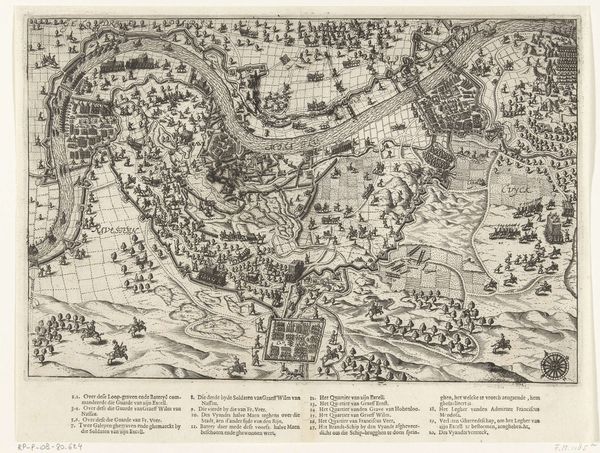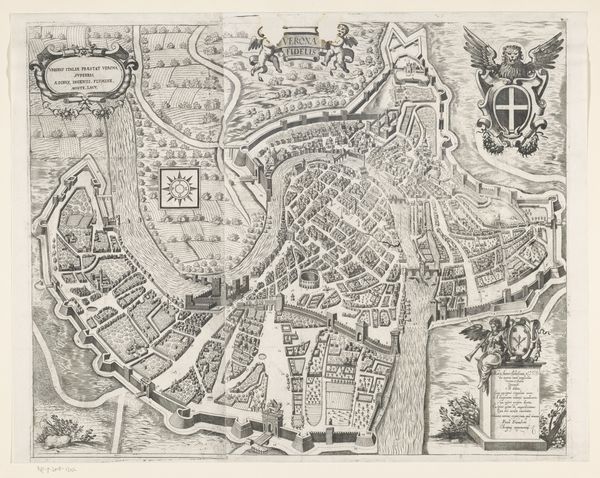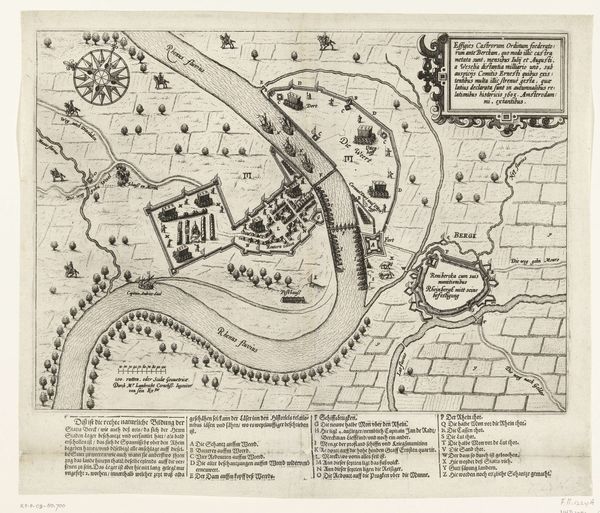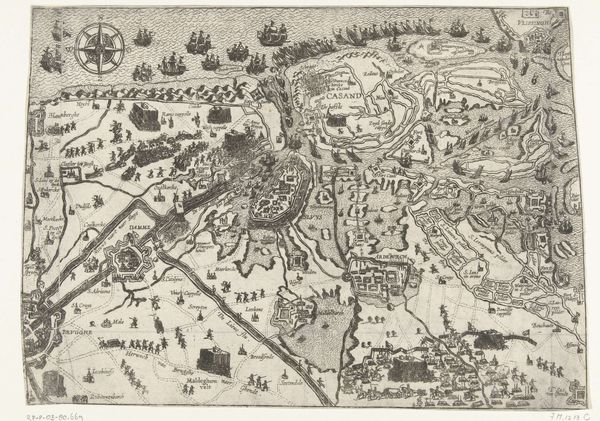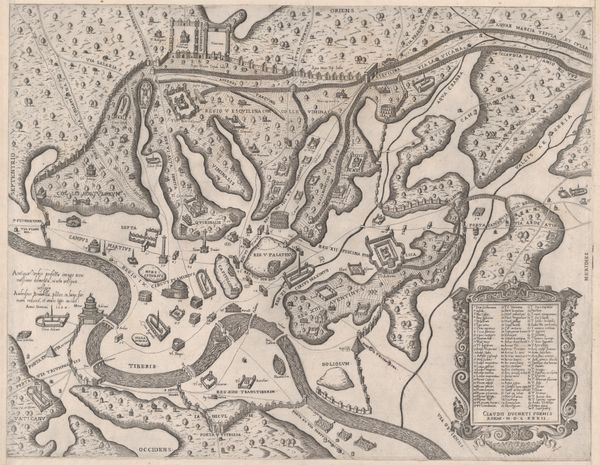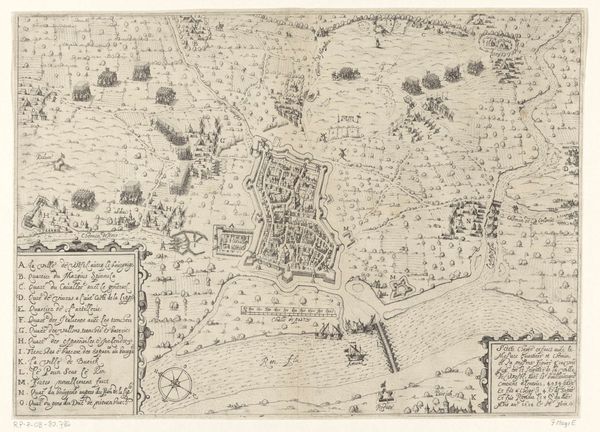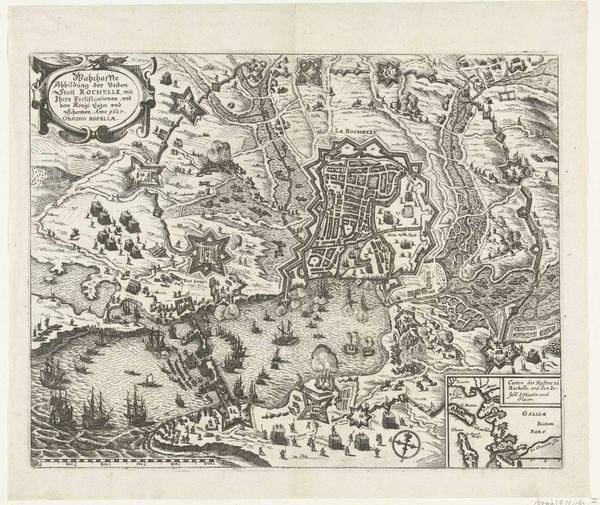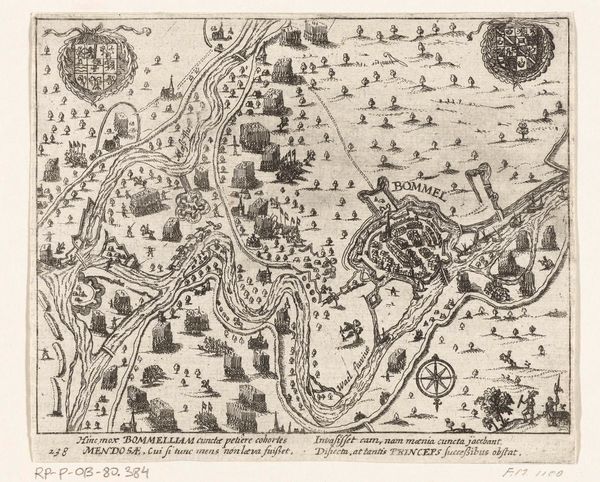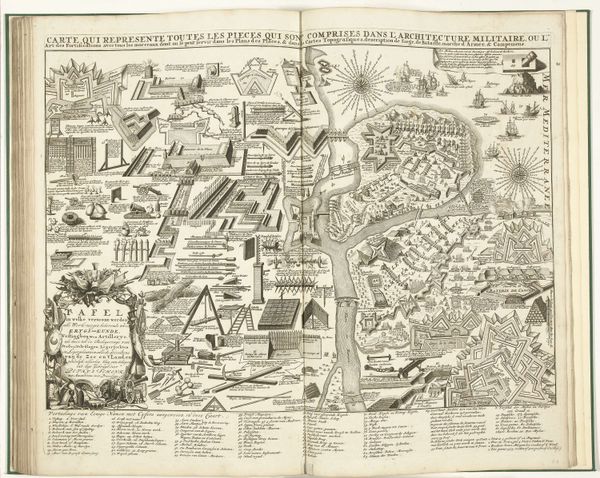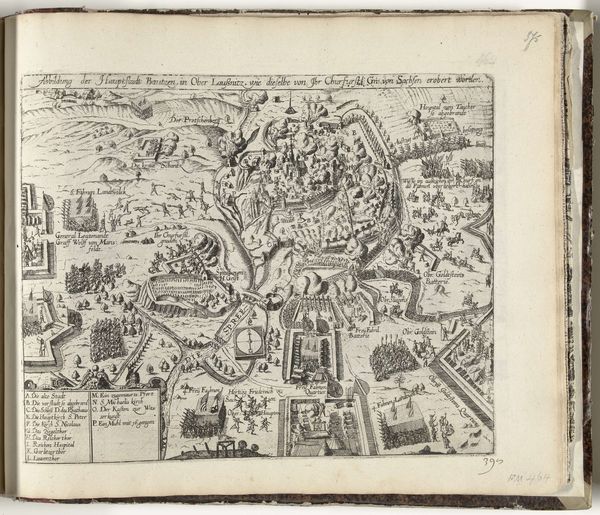
print, engraving
#
dutch-golden-age
# print
#
cityscape
#
early-renaissance
#
engraving
Dimensions: height 524 mm, width 720 mm
Copyright: Rijks Museum: Open Domain
Curator: This engraving, created by Baptista van Doetechum in 1602, depicts the siege of Grave. Editor: My first impression is one of incredible detail. The landscape seems to stretch endlessly, meticulously mapped, and rendered. It really highlights the labor that went into its creation. Curator: Absolutely, the level of precision is remarkable. Maps like these weren't just geographic tools. They served as potent symbols of power, knowledge, and control. See how the besieging forces are represented? They’re almost a kind of ordered swarm. Editor: And the city itself is almost stylized, an object. It emphasizes control, perhaps? Control of the resources within its walls, and in the adjacent farmland? I imagine a lot of labor went into erecting these fortifications. I wonder about their functionality versus their symbolic weight? Curator: Yes, and think of the cultural impact of this imagery, spreading information, shaping perception, not just about the event itself but about Dutch identity. Note the banners, symbols of allegiance, all serving to emphasize not just who controls Grave, but who is invested in the place. Editor: I am also noticing the border with those armorial devices. They underscore, too, the social and economic relationships which facilitated both its making, its distribution, and it ultimate use. This print had a function, not merely artistic or aesthetic, but documentary. What social groups would have had access to something like this? Curator: Likely elites, the military class, and those invested in trade. These images were currency in a way, solidifying relationships through shared understanding, perhaps reinforcing allegiances or warning others of the rising influence of Dutch power. Editor: It all loops back to process for me, right? How this print circulates as a physical object tells us about social connections and trade networks. Curator: For me, too, in some sense. How symbols become associated with movements of power is fascinating here. I think in particular the depiction of armies. Editor: Examining this work gives me a renewed respect for the processes that mediate visual information and their economic contexts, the power relations they underscore, and the many laborers behind the final product. Curator: For me, looking at the symbolic register of the work invites me to contemplate the power of mapping itself. Representations create as much as they depict.
Comments
No comments
Be the first to comment and join the conversation on the ultimate creative platform.
